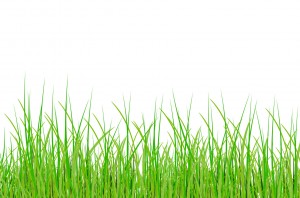Ornamental Grass
 There are two ornamental grass types: Warm and cold season grasses. What you plant depends on how you would like your garden to look with the ornamental grass foliage.
There are two ornamental grass types: Warm and cold season grasses. What you plant depends on how you would like your garden to look with the ornamental grass foliage.
Cool season grass starts growth in the spring, when temperatures warm to above freezing. These ornamental grasses flower by early summer, after which growth slows down. It is a good idea to plant cool season ornamental grass with spring flowering bulbs–like tulips and daffodils–for a showy springtime display. Cool season grasses thrive in northern climates where the growing season is short. These grasses require frequent division to keep them healthy. Cool-season grasses include the “premier” lawn grasses: blue grass (the all-time favorite lawn grass), perennial rye grass, bent grass, and fine fescue. All have narrow blades and good color, and make lush-looking lawns. Many of the blue grass hybrids are very cold tolerant. Bent grass has the finest texture of all; you’ll see it most often on putting greens or used as a garden accent in a rarely-walked-on spot. Tall fescue is another cool-season choice.
Warm season ornamental grass grows later in the spring and flowers from mid to late summer until frost. While these grasses thrive in warmer weather, some varieties survive cold temperatures–check with your local nursery for the types of warm season grasses that can withstand winter in your region. These grasses look great as a backdrop or alone when combined with a variety of other grasses–even cool season grass. Warm season grasses require less division maintenance. Unlike cool-season grasses, warm-season sorts go partially to completely dormant during winter (depending on how cold the weather gets) whether water is available or not. The group includes common Bermuda and hybrid Bermuda, zoysia, St. Augustine, Bahia, centipede, and buffalo grasses. All grow most vigorously during hot weather, and most are grown in the warm climates of the South and Southeast, as well as in some parts of the Southwest and Far West. Buffalo grass has so far been most widely used in Texas and parts of the Great Plains states. Common and hybrid Bermuda are among the most popular warm-season grasses. Both are relatively drought tolerant and very resistant to wear and tear. Hybrid Bermuda is finer textured than common Bermuda and doesn’t turn brown in winter as readily.
Water and fertilizer needs differ between the two groups, and susceptibility to some pests and diseases varies as well. Where you live usually dictates the type of grass you can grow, although cool-season sorts succeed in many areas if given sufficient water.
Source: “Grass Types.” www.Sunset.com . Web. 17 June 2013.
Call us today to view our new home plans: 713-539-0048 – Sign up for our New Home Buying Tips
Visit our website: https://fairmontcustomhomes.com/
View Our Communities – View our available new home floor plans – View our photo gallery
Follow Us: Facebook – Twitter – YouTube – LinkedIn – Google Plus


Sorry, the comment form is closed at this time.